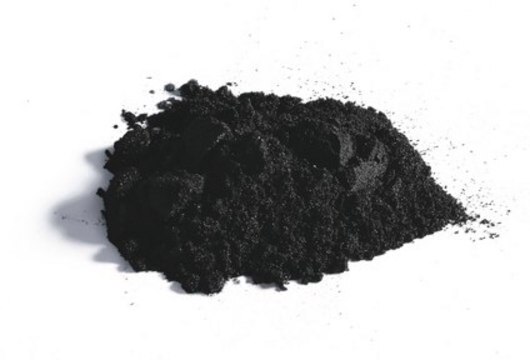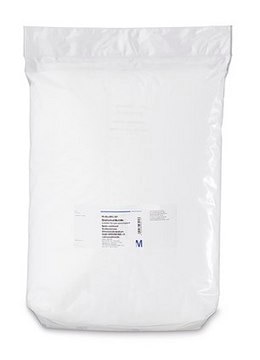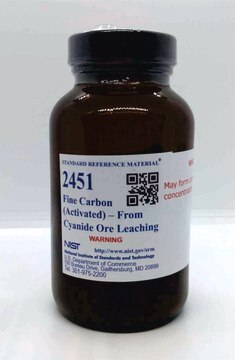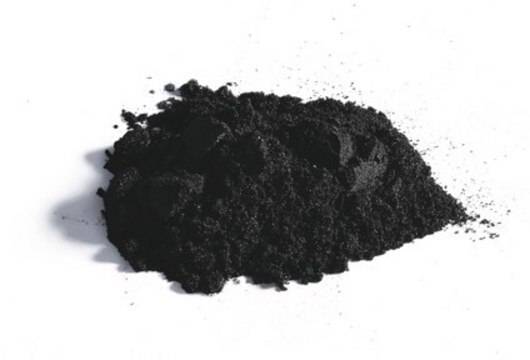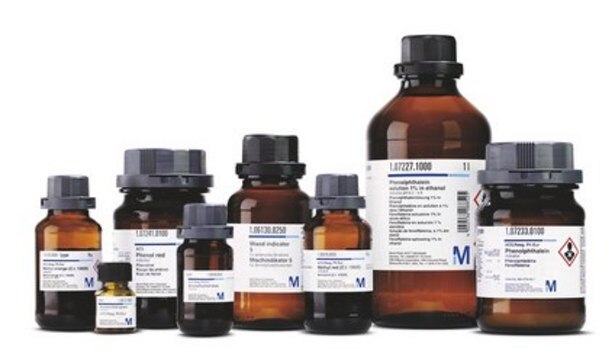1.02184
Charcoal activated
powder extra pure
Synonym(s):
Charcoal activated
About This Item
Recommended Products
Quality Level
form
powder
surface area
800-1500 m2/g
impurities
cyano compounds (CN), passes test
polycyclic aromates, passes test
tar, passes test
≤5% HNO3 solubles
≤5% Substances soluble in nitric acid
ign. residue
≤2% (600 °C)
loss
≤10% loss on drying
mp
3550 °C
bulk density
150‑440 kg/m3
anion traces
chloride (Cl-): ≤200 ppm
cation traces
As: ≤5 ppm
Fe: ≤500 ppm
Pb: ≤20 ppm
Zn: ≤100 ppm
storage temp.
no temp limit
InChI
1S/C
InChI key
OKTJSMMVPCPJKN-UHFFFAOYSA-N
Looking for similar products? Visit Product Comparison Guide
Related Categories
Application
- Adsorptive Removal of Dyes and Contaminants: Activated charcoal is extensively used for the adsorption and removal of dyes and other contaminants from aqueous solutions. Recent research highlights the use of activated charcoal modified with BaFe12O19 powder for the efficient removal of methyl blue dye. This magnetic adsorbent can be easily retrieved and reused, making it a sustainable option for water purification (Polley and Bera, International Journal of Environmental Analytical Chemistry, 2023).
- Heavy Metal Detection and Removal: Activated charcoal is utilized in composite materials for detecting and removing heavy metals from water. A notable study developed a Ni-sensor based on activated charcoal plastic membranes, showcasing the material′s effectiveness in analytical applications for environmental monitoring and pollution control (Zareh et al., Journal of Analytical Chemistry, 2022).
- Filter Composites for Industrial Wastewater Treatment: Activated charcoal combined with banana rachis cellulose nanocrystals has been used to create filter composites for industrial wastewater treatment. These composites effectively remove dyes and heavy metals, demonstrating their potential for large-scale environmental applications and enhancing water quality (Rahman et al., International Journal of Environmental Analytical Chemistry, 2022).
- Dental Applications: In dental research, activated charcoal combined with calcium hydroxide has been evaluated for its effect on dentin microhardness. This combination shows promise in dental treatments, particularly in enhancing the mechanical properties of dentin and offering potential benefits in restorative dentistry (Abdel Hamid, Egyptian Dental Journal, 2023).
- Environmental Adsorbents and Sensors: Activated charcoal is also used in creating advanced environmental adsorbents and sensors. For instance, a study focused on the development of magnetically retrievable BaFe12O19-activated charcoal-chitosan composite powders for the adsorption of methyl blue dye. These materials offer high efficiency, reusability, and easy recovery, making them ideal for environmental remediation applications (Polley and Bera, International Journal of Environmental Analytical Chemistry, 2022).
Analysis Note
Substances soluble in nitric acid: ≤ 5 %
Chloride (Cl): ≤ 200 ppm
Cyano compounds (CN): passes test
As (Arsenic): ≤ 5 ppm
Fe (Iron): ≤ 500 ppm
Pb (Lead): ≤ 20 ppm
Zn (Zinc): ≤ 100 ppm
Polycyclic aromates: passes test
Tar products: passes test
n-Hexane adsorption: ≥ 30 %
Residue on ignition (600 °C): ≤ 2 %
Loss on drying: ≤ 10 %
Storage Class
11 - Combustible Solids
wgk_germany
nwg
flash_point_f
Not applicable
flash_point_c
Not applicable
Certificates of Analysis (COA)
Search for Certificates of Analysis (COA) by entering the products Lot/Batch Number. Lot and Batch Numbers can be found on a product’s label following the words ‘Lot’ or ‘Batch’.
Already Own This Product?
Find documentation for the products that you have recently purchased in the Document Library.
Customers Also Viewed
Our team of scientists has experience in all areas of research including Life Science, Material Science, Chemical Synthesis, Chromatography, Analytical and many others.
Contact Technical Service